#poor prahlad
Text
The fact that most desi kids will agree that bua is the worst relative of all. I don't think this is a this era problem.
We can trace it back to the Satya Yug see... Even Pralhad had same issues. His bua tried to set him on fire.
#holi is coming so have some holi related post lol#poor prahlad#buas are the worst ik#hindu mythology#desiblr#hindublr#desi relatives#desi kids
80 notes
·
View notes
Text
Prahlad was the og daddy issues wala boy
#like poor boy's father was after his life#its the generational trauma i tell you#of course daddy vishnu was there to save the day#but like#hindu mythology#hindu history#prahlad#daddy issues ft. Hindu mythology
95 notes
·
View notes
Text
Arjuna became proud that he is the biggest devotee of God, then how did Lord Shri Krishna break Arjuna's ego?
Once Arjuna became proud that he was the greatest devotee of God. One day Shri Krishna took Arjuna for a walk with him.
On the way they met a poor Brahman. His behaviour was a little strange. He was eating dry grass and a sword was hanging from his waist.
Arjun asked him, 'You are a worshiper of non-violence. Due to fear of violence, the creatures survive by eating dry grass. But then why do you have this instrument of violence, the sword, with you?'
The Brahmin replied, I want to punish some people.
Who are your enemies? Arjun expressed curiosity.
The Brahmin said, I am searching for four people so that I can settle my accounts with them.
First of all I am looking for Narad. Narad does not allow my Lord to rest, he always keeps him awake by singing bhajans and kirtans.
Then I am also very angry with Draupadi. She called out to my Lord just when he was sitting down to eat. He immediately had to leave his meal and go to save the Pandavas from the curse of sage Durvasa. Just look at his audacity. He fed false food to my Lord.
Who is your third enemy? Arjun asked. He is heartless Prahlad. That cruel person put my Lord in a cauldron of hot oil, crushed him under the feet of an elephant and finally forced him to appear from a pillar.
The fourth enemy is Arjun. Look at his wickedness, he has made my God his charioteer. He did not care at all about God's inconvenience. How much pain my Lord must have suffered. As soon as he said this, the Brahmin had tears in his eyes.
Seeing this, Arjun's pride was shattered. He apologized to Shri Krishna and said, Lord, I agree that there are so many types of your devotees in this world, I am nothing.
#bhagavadgita#bhagvadgita#bhagavatam#bhagwad gita#bhagwan#bhagavad gita#bhagavadgeeta#bhagawadgita#bhagavadgītā#vedas#astrology#vedic astro observations#lordkrishna#vedic jyotish online#krishna#harekrishna#vedic astrology#astrology numerology vedicastrology#hare krishna#bhagwadgeeta#bhagwan shiv#bhagwatgeeta#shrimad bhagwat katha#spiritual enlightment#spiritualawakening#spiritual awakening#spirituality#enlightenedconsciousness#enlightenyourself#enlightenment
18 notes
·
View notes
Text
Holi Essay Writer Free Online | Craft Your Festival Tale Effortlessly
Holi Essay Writer
Holi celebrations can now be extended to your essays. Our free Holi Essay Writer Online enables you to articulate your Holi experiences, capturing the colors, joy, and unity in your words. Crafting an engaging Holi essay has never been this simple. Holi, the festival of colors, is one of the most vibrant and joyous celebrations in India. It marks the arrival of spring and is celebrated with great enthusiasm and fervor across the country. The festival brings people together, transcending barriers of caste, creed, and social status, as everyone joins in the revelry of colors. The roots of Holi can be traced back to ancient Hindu mythology, particularly to the legend of Prahlad and Hiranyakashipu or the divine love of Radha and Krishna. Prahlad's devotion to Lord Vishnu, despite his father's opposition, symbolizes the victory of good over evil. Radha and Krishna's playful throwing of colored powders has become synonymous with the spirit of Holi. Traditions and Customs: Holi is celebrated over two days. The first day, known as Holika Dahan, involves the lighting of bonfires to signify the burning of Holika, the demoness, and the triumph of good over evil. On the second day, people gather in streets and open spaces, armed with colored powders and water guns, ready to drench each other in hues of joy.
Celebratory Atmosphere: The atmosphere during Holi is electrifying, filled with laughter, music, and dance. People smear each other with colored powders, exchange sweets and greetings, and rejoice in the spirit of togetherness. It's a time when old grudges are forgotten, and new bonds are forged.
Unity in Diversity: One of the most remarkable aspects of Holi is its ability to unite people from diverse backgrounds. During the festival, social barriers dissolve as people from all walks of life come together to celebrate. Rich or poor, young or old, everyone becomes equal in the kaleidoscope of colors.
Community Spirit: Holi is not just a festival for individual enjoyment; it's also a time for community bonding. Families and neighborhoods organize gatherings where everyone participates in the revelry. Traditional delicacies like gujiya and thandai are shared, adding to the festive spirit.
Modern Interpretations: In recent years, Holi celebrations have undergone modern interpretations. From themed parties to corporate events, Holi has transcended cultural boundaries and gained popularity worldwide. However, amidst the modernization, the essence of the festival remains unchanged – spreading love, joy, and harmony.
Environmental Concerns: While Holi is a time of exuberance, it's essential to celebrate responsibly. The synthetic colors and water wastage during the festival have raised environmental concerns. Many organizations advocate for eco-friendly celebrations, promoting the use of natural colors and water conservation measures.
Holi is more than just a festival; it's a celebration of life itself. It embodies the spirit of joy, togetherness, and the triumph of good over evil. As the colors of Holi spread far and wide, they remind us of the beauty of diversity and the power of unity. In a world often divided by differences, Holi serves as a colorful reminder of our shared humanity. So, let's immerse ourselves in the hues of Holi and celebrate the kaleidoscope of life with open hearts and minds.

1 note
·
View note
Text
#living_proof_of_God_Kabir
God Kabir himself came in the form of Narasimha and protected his devotee Prahlad.
Poor, devotee of Prahlad Kundai Kasauti, eighty-four passed.
Narayan in the form of Narasimha came tearing the pillar.
Kabir Prakat Diwas 4 June

0 notes
Text
Festivals in India
India is a land of diversity and culture, and one of the things that adds to this diversity is its vibrant festivals. From Holi to Diwali, every festival has a unique story, a distinct way of celebration, and is an important part of the country's rich cultural heritage. In this blog, we will explore some of the most popular festivals in India, their significance, and how they are celebrated.
Diwali
Diwali, also known as the festival of lights, is one of the most widely celebrated festivals in India. It usually falls in October or November and is celebrated to mark the victory of good over evil. The festival is celebrated by lighting diyas (earthen lamps) and candles, decorating homes with colorful lights, and bursting firecrackers. The festival has several myths and legends associated with it. According to one popular myth, Lord Rama returned to his kingdom Ayodhya after defeating the demon king Ravana, and the people of the kingdom lit diyas to welcome him. Another legend states that the goddess of wealth, Lakshmi, visits the homes of her devotees during Diwali and blesses them with wealth and prosperity. The celebration of Diwali varies across different regions of India, but it generally involves the preparation of traditional sweets and snacks, exchanging gifts and sweets with friends and family, and lighting lamps and candles. The festival is also an occasion for socializing and bonding with loved ones.

Holi
Holi, also known as the festival of colors, is celebrated in the month of March to mark the victory of good over evil. The festival is associated with the legend of Prahlad, a devout follower of Lord Vishnu, and his father Hiranyakashipu, who was a demon king. The festival is celebrated by smearing coloured powder and throwing water on each other, singing and dancing to traditional folk songs, and enjoying traditional sweets and snacks. Holi is a festival of unity, and it is celebrated across different communities and religions in India. People forget their differences and come together to celebrate the festival in a spirit of joy and camaraderie.
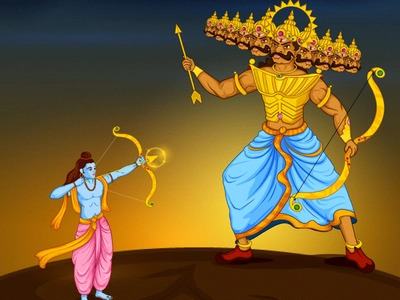
Dussehra
Dussehra, also known as Vijayadashami, is celebrated in the month of October to mark the victory of Lord Rama over the demon king Ravana. The festival is celebrated across different regions of India with great fervor and enthusiasm. The festival is celebrated with the staging of the Ramayana, a Hindu epic, which depicts the life and deeds of Lord Rama. In some parts of the country, effigies of Ravana, his brother Kumbhakarna, and son Meghnad are burned on the day of Dussehra to symbolize the victory of good over evil. The festival also marks the end of the Navratri, a nine-day festival that is celebrated in honor of the goddess Durga. The festival is celebrated with the preparation of traditional sweets and snacks, and the exchange of gifts and sweets with friends and family.

Eid al-Fitr
Eid al-Fitr is a Muslim festival that marks the end of the holy month of Ramadan. The festival is celebrated by offering special prayers in mosques, exchanging gifts and sweets with friends and family, and enjoying traditional Muslim delicacies. The festival is celebrated with great enthusiasm across different regions of India. Muslims dress up in new clothes, visit relatives and friends, and offer prayers in the mosque. The festival is also an occasion for charity, and many people donate money and food to the poor and needy.
Christmas
Christmas is a Christian festival that is celebrated across different parts of India with great enthusiasm. The festival is celebrated to mark the birth of Jesus Christ, and it is associated with the traditions and customs of the Christian community in India. The celebration of Christmas in India is a unique blend of Indian and Western traditions. Christians attend midnight mass on Christmas Eve, exchange gifts and sweets with friends and family, and enjoy traditional Christian delicacies like cakes and pastries. In some parts of the country, people also decorate their homes with colorful lights and Christmas trees.
Ganesh Chaturthi
Ganesh Chaturthi is a festival that celebrates the birth of Lord Ganesha, the elephant-headed Hindu god of wisdom and prosperity. The festival is celebrated in the month of August or September and is marked by the installation of Ganesha idols in homes and public places.
The festival is celebrated with great pomp and show across different regions of India. People decorate their homes with flowers and lights, prepare traditional sweets and snacks, and perform aarti and offer prayers to the deity. The festival culminates in the immersion of the idols in rivers, lakes, and the sea, accompanied by music and dance.
Onam
Onam is a harvest festival that is celebrated in the southern state of Kerala. The festival is celebrated to mark the homecoming of the mythical King Mahabali, who is believed to have ruled over Kerala in ancient times. The festival is celebrated with great enthusiasm and involves the preparation of a traditional vegetarian feast called Onam Sadhya. The feast consists of a variety of dishes, including rice, sambar, avial, and payasam. The festival is also marked by the performance of traditional dance forms like Kathakali and Pulikali.

Bihu
Bihu is a festival that is celebrated in the northeastern state of Assam. The festival is celebrated to mark the onset of spring and the beginning of the agricultural season. The festival is celebrated with great enthusiasm and involves the performance of traditional folk dances like Bihu and Jhumur. People also prepare traditional Assamese delicacies like pitha and laroo, and exchange gifts and sweets with friends and family.
Navratri
Navratri is a nine-day festival that is celebrated in honor of the goddess Durga. The festival is celebrated across different regions of India with great enthusiasm and involves the performance of traditional dance forms like Garba and Dandiya. The festival is celebrated with the preparation of traditional sweets and snacks, the exchange of gifts and sweets with friends and family, and the decoration of homes with colorful lights and flowers. The festival culminates in the celebration of Dussehra, which marks the victory of Lord Rama over the demon king Ravana.
Lohri
Lohri is a festival that is celebrated in the northern state of Punjab to mark the winter solstice. The festival is celebrated with the lighting of bonfires, the performance of traditional folk dances like Bhangra and Giddha, and the exchange of gifts and sweets with friends and family. The festival is also associated with the harvest season and is marked by the preparation of traditional Punjabi delicacies like sarson ka saag and makki ki roti. People also sing traditional songs and perform rituals to seek the blessings of the gods for a bountiful harvest.
In conclusion, festivals are an integral part of Indian culture and heritage. They bring people together, promote social harmony and goodwill, and provide a glimpse into the rich cultural diversity of the country. Whether it is the colors of Holi, the lights of Diwali, or the feasting of Eid, each festival has a unique story, a distinct way of celebration, and a special significance that is treasured by the people of India.
1 note
·
View note
Text
#Glory_Of_LordKabir
Kabir Prakat Diwas 14 June
God Kabir ji had come in the form of Narasimha and protected his devotee Prahlad-
Poor, Prahlad devotee took Kundai testimonial, eighty-four.
Narayan took the form of Narasimha, came tearing down the pillar.
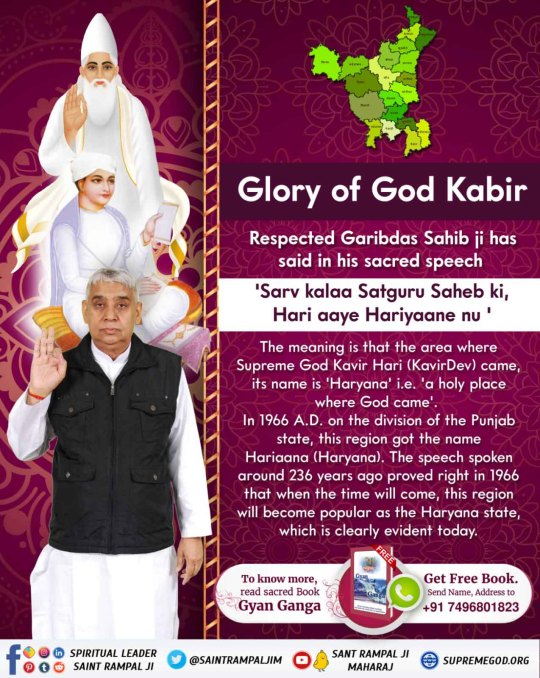

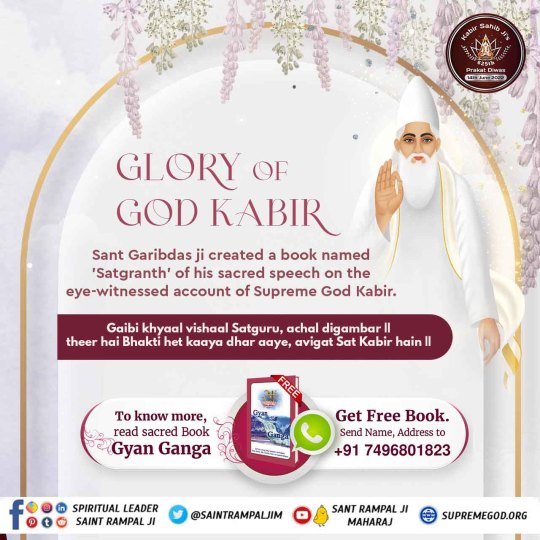

0 notes
Text
#Glory_Of_LordKabir
God Kabir ji had come in the form of Narasimha and protected his devotee Prahlad-
Poor, Prahlad devotee took Kundai testimonial, eighty-four.
Narayan took the form of Narasimha, came tearing down the pillar.
Kabir Prakat Diwas 14 June
0 notes
Text
#GodKabirComesIn4Yugas
God Kabir had come in the form of Narasimha and protected his devotee Prahlad.
Poor Prahlad devotee kundai criterion, eighty-four bar taya.
Narayan took the form of Narasimha, came tearing the pillar.

Kabir Prakat Diwas 24 June
1 note
·
View note
Text
Post # 122
Three passengers on a Kabir train
Passenger # 1 : Prahalad Singh Tipanya
In 1978, a 24-year young Dalit government school teacher in a village called Luniyakhedi in Ujjain district of Madhya Pradesh, heard the Tanpura (or Tambura) for the first time in his life and was so captivated by it that he started off on the journey of his life. His name was Prahlad Tipaniya.

Through the Tambura, Prahlad Tipaniya entered the world of Kabir. The words of this fifteenth-century saint-poet are sung in village after village by hundreds of bhajan mandalis, whose have kept alive the oral tradition of singing Kabir’s poetry for the past 600 years. Prahladji entered this world of all-night bhajan sessions as a learner. Over four decades later, he is a household name.
Prahaladji sings in a powerful Malwi style, yielding the Tanpura and the Kartal himself. His troupe consists of accompanying singers and instrumentalists playing manjira, dholak, harmonium, timki and violin. His music is not just entertaining, he connects with his audience at a spiritual level, with dialogues and simple explanations. It spreads Kabir's message - to rise above petty divisiveness, empty ritualism, and the need to adopt love as the ultimate religion.
He is a Malwa Ratna, a Sangeet Natak Academy awardee and a Padma Shree.
In 1997, Prahladji set up the Kabir Smarak Seva Shodh Sansthan (Kabir Memorial Service and Research Institute), on a plot of land granted to him by the state government adjoining his home in Lunyakhedi village. He calls this land Kabir Nagar and organizes an annual event, where thousands congregate to listen to Kabir’s words through bhajans and discourses by gathered singers and spiritual leaders.

In 2010, he started the annual Malwa Kabir Yatra, a 5-day event, which carries musicians, listeners, travelers, seekers, nomads, old, young, rich and poor together, at the same time, on the same path, making Kabir a religion of the people.

That was Passenger # 1 - Prahalad Singh Tipanya.
Passenger # 2 : Shabnam Virmani
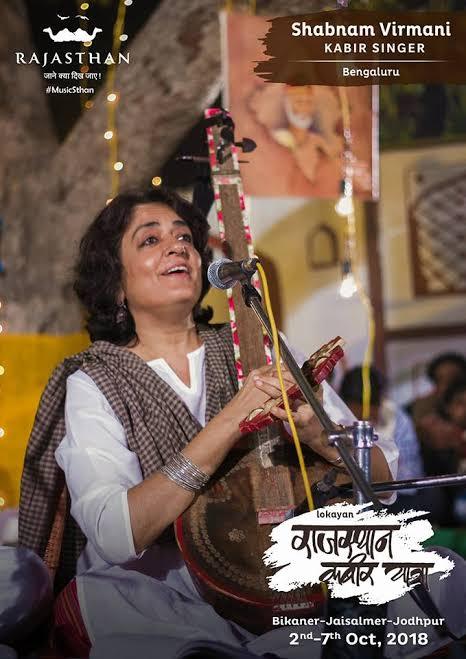
Shabnam Virmani began her career in journalism in The Times of India, Jaipur in 1987. Just a few months later, she made history when she wrote about the infamous Roop Kanwar’s Sati, in Deorala, Rajasthan. Her article became one of the triggers for a vibrant women’s movement that led to the ban on Sati. However, she decided to quit journalism. Later, she won a scholarship to do a Masters degree in Development Communication at the Cornell University and became a film-maker. Her impactful documentaries like When Women Unite, about the successful anti-liquor movement of rural women in Andhra Pradesh and Tu Zinda Hai, which was about successful women activists of Madhya Pradesh, have won many hearts as well as prestigious awards and honors. Drishti Media, Arts, and Human Rights was co-founded by Shabnam, in 1993, in Ahmedabad, Gujarat.
In 2002, she was living in Ahmedabad, when Godhra happened. Hindus and Muslims clashed. She was dabbling with Kabir at that time. And Kabir seemed to say to her - Sadho, dekho jag bauraya- O seekers! see the world’s gone mad. And she set out on a series of journeys, camera in hand, venturing into diverse socio-cultural, religious and musical landscapes, meeting with people who sing, love, quote, revere and make meaning of Kabir. One such person, who became her guru was a Malwi musician from Madhya Pradesh - Prahalad Tipanya.
So, as though nudged by Kabir himself, she made four documentary films.
Had-Anhad: Journeys with Ram and Kabir probes the divides created by religion and nationalism.
Koi Sunta Hai: Journeys with Kumar and Kabir probes the boundaries we create in the realms of knowledge, art and music, in forms of Gharanas, and how some people like Kumar Gandharva and Kabir, challenged them and crossed-over.
Chalo Hamara Des: Journeys with Kabir and Friends shows a friendship between a rural Dalit folk singer, Prahlad Tipanya and an American scholar, Linda Hess.
Kabira Khada Bazaar Mein: Journeys with Sacred and Secular Kabir probes the ironies, compulsions and contradictions that unfold in Kabir Panthis (ones who walk the talk of Kabir).

One of her most touching endeavors is the Kabir Project. The Kabir Project is a series of journeys in quest of Kabir and other Bhakti, Sufi and Baul poets. These journeys inquire into mystic poetry of these saints through songs, images and conversations, curated through documentary films, music CDs, books, urban festivals, rural yatras, workshops and courses and a web archive called Ajab Shahar.
That was Passenger # 2 - Shabnam Virmani.
Passenger # 3 : Linda Hess
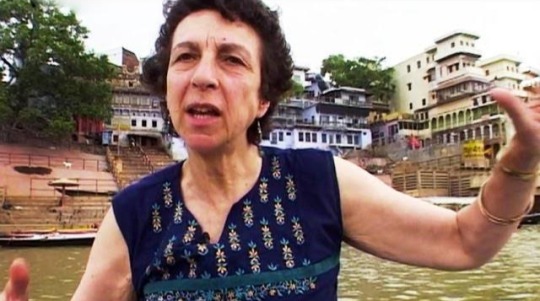
Dr. Linda Hess was, for 21 years, till she retired in 2017, a Senior Lecturer in the Department of Religious Studies, Stanford University. And she is a scholar, writer, devotee and lover of Kabir.
She was born and raised in a Jewish family. When she was 21, she "got the call" and moved to India. She says she fell in love with Kabir immediately. "He was sharp, funny, vivid and astonishing. What you didn’t want to hear, he would say—over and over, in your face. But you liked it because, really, you did want to hear it.”
She says she started reading other Bhakti poets of North India - Mirabai and Tulsi Das - but couldn't connect with their Saguni mode of Bhakti. Kabir and his Nirguni nuggets of wisdom appealed to her a lot more. She listened to the two most popular forms of Kabir poetry - Dohas and Bhajans.
The two people who touched her the most were - the same old Malwi folk singer, Prahalad Tipanya, and Kumar Gandharva. Unfortunately, she couldn't meet Kumar Gandharva in person, but after he died, she visited his family and they graciously welcomed her and gave her access to rare work of Kumar Gandharva on Kabir.
Linda Hess is best known for her book - The Bijak of Kabir - widely accepted as the best translation of Kabir poetry in English, and a couple of other books.
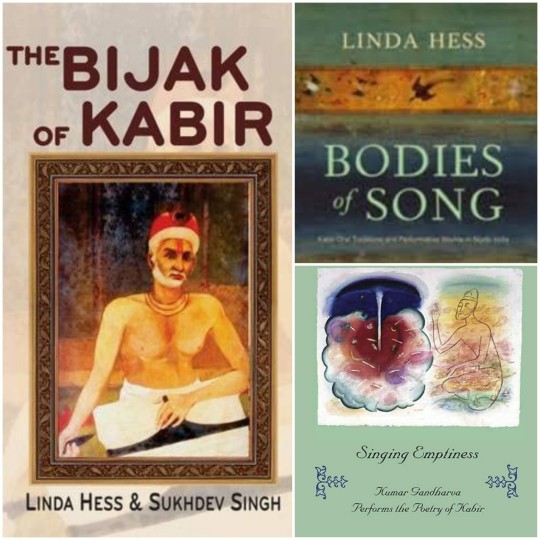
From 2002, Linda started to focus on oral traditions rather than printed texts, spending extended periods of time in India with singers. Hence began her association with Shabnam Virmani. Linda joined the Kabir project bandwagon as a consultant and has been a co-passenger ever since.
That was Passenger # 3 - Linda Hess.
These three passengers boarded the Kabir Express at different times in their lives, took some time to settle down on their berths and get to know each other. But once they did, they created some magic!
Listen to some pure, 24-carat-gold music! Have fun trying to spot Linda in the video. Of course, this video is Shabnam's Ajab Shahar production.
youtube
#kabir#prahlad singh tipanya#prahlad tipanya#lujiyakhedi#tambura#tanpura#malwi#padma shri#kabir smarakseva shodh sansthan#kABIR NAGAR#malwa kabir yatea#shabnam virmani#cornell university#godhra#documentary film#kabir project#ajab shahar#roop kanwar's sati#linda hess#stanford university#nirguni#the bijak of kabir
8 notes
·
View notes
Text
#Witnesses_of_GodKabir
God Kabir Saheb had come in the form of Narsingh.
Voice:-
Poor Prahlad devotee kundai criterion, eighty-four bar taya. Narayan took the form of Narasimha, came tearing down the pillar.
For more information Sant Rampal J

0 notes
Text

#Witnesses_of_GodKabir
God Kabir Sahib had come in the form of Narasimha.
Voice:-
Poor Prahlad devotee kundai criterion, eighty-four bar taya. Narayan took the form of Narasimha, came tearing down the pillar.
@SaintRampalJiM https://t.co/xUICTm3V7N
0 notes
Text
Having gained that state, one does not consider any attainment to be greater. Being thus established, one is not shaken even in the midst of the greatest calamity.
Chapter 6 Verse 22
•COMMENTARY•
In the material realm, no extent of attainment satiates a person totally. A poor person strives hard to become rich, and feels satisfied if he or she is able to become a millionaire. But when that same millionaire looks at a billionaire, discontentment sets in again. The billionaire is also discontented by looking at an even richer person. No matter what happiness we get, when we perceive a higher state of happiness, the feeling of unfulfillment lingers. But happiness achieved from the state of Yog is the infinite bliss of God. Since there is nothing higher than that, on experiencing that infinite bliss, the soul naturally perceives that it has reached its goal.
God’s divine bliss is also eternal, and it can never be snatched away from the yogi who has attained it once. Such a God-realized soul, though residing in the material body, remains in the state of divine consciousness. Sometimes, externally, it seems that the Saint is facing tribulations in the form of illness, antagonistic people, and oppressive environment, but internally the Saint retains divine consciousness and continues to relish the bliss of God. Thus, even the biggest difficulty cannot shake such a Saint. Established in union with God, the Saint rises above bodily consciousness and is thus not affected by bodily harm. Accordingly, we hear from the Puranas how Prahlad was put in a pit of snakes, tortured with weapons, placed in the fire, thrown off a cliff, etc. but none of these difficulties could break Prahlad’s devotional union with God.
0 notes
Text
Despite highest disruptions since 2014, here's the list of bills passed in Parliament
Despite highest disruptions since 2014, here's the list of bills passed in Parliament
India
oi-Madhuri Adnal
|
Published: Thursday, August 12, 2021, 17:05 [IST]
Deplorable actions by opposition Members of Parliament (MPs) have become a norm. Their actions in this session were not an exception but a continuation. From tearing of the rule book last year to the opposition indulging in most unparliamentary conducts ever witnessed by this House, the conduct of opposition is becoming shameful day by day.
This was said in a press conference today in New Delhi. The press conference was attended by Union Ministers Shri Piyush Goyal, Shri Dharmendra Pradhan, Shri Mukhtar Abbas Naqvi, Shri Prahlad Joshi, Shri Bhupendra Yadav, Shri Anurag Singh Thakur, Shri Arjun Ram Meghwal and Shri V Muraleedharan.
The Ministers pointed out that opposition had publicly stated that the session should be washed out.
Their intention was to not let the house conduct business. Infact, the Government had offered discussions on several occasions. However, appeals for discussions fell on deaf ears and they even took papers from the hands of the Hon’ble Minister and tore them. Even the Hon’ble Prime Minister was not allowed to introduce the Newly sworn In Council of Ministers.
Some Opposition members desecrated the sanctity of the House by climbing the Sanctum Sanctorum (Garbhagriha), namely the table located at well of the House and threw the Rule Book at the Chair. The Member of Parliament who stood on the table in the Parliament was not only standing on the table but was trampling upon Parliamentary ethics. He was not only throwing a book at the chair but was also throwing Parliamentary conduct out of the House. Such behaviour is unprecedented in our House and the opposition has done grievous harm to the reputation of the house. Opposition’s behaviour was an assault on the dignity of the institution and could have grievously injured the Secretary General.
Misbehaviour by the Opposition members is a shameful disgrace in the Parliamentary History of India. It is rather unfortunate that the opposition MPs are not even apologetic about their actions. Rather they are considering these shameful actions as acts of valour.
Shri Piyush Goyal said that opposition has misbehaved throughout the session only because they do not want issues of public welfare to be discussed. It is demanded that strict action should be taken on the shameful and obstructive behaviour of the Opposition. They wanted to create Opposition unity to foster national disunity. They owe answers to the nation.
The Opposition questions over bills being passed in din. However, it is their refusal to allow parliamentary debate that has left no choice. From merely shouting, they have shifted to violence and manhandling staff to disrupt parliamentary process. Also, where was this concern about passage without discussion when numerous bills were passed in din during the UPA rule. Between 2006 and 2014, the United Progressive Alliance (UPA 1 & 2) government passed a total of 18 Bills in a hasty manner.
Despite highest disruption since 2014, the no. of bills passed per day during this session in Rajya Sabha was the 2nd highest since 2014 (i.e. 1.1 bills per day passed). The time lost due to interruptions / adjournments (till Aug 11) was 76 Hours 26 Minutes and the highest average time per day lost due to interruptions / adjournments since the 231st session of Rajya Sabha in 201 was 4 Hours 30 Minutes.
Despite all the chaos and disruption, 19 Bills passed in Rajya Sabha (incl. Constitutional Amendment on OBC reservation also passed), which are in national interest and will benefit the poor, OBCs, workers, entrepreneurs, & all sections of our society. This reflects the commitment, productivity and ability of the Govt to drive legislative agenda in the Parliament, which aims to fulfil the aspirations of its citizens. It will shape the future of our country. Govt successfully carried out Govt business during the session.
Details of the Monsoon Session
1. The Monsoon Session, 2021 of Parliament which commenced on Monday, 19th July, 2021 has been adjourned sine die on Wednesday, the 11th of August, 2021. The Session provided 17 sittings spread over a period of 24 days.
2. The Session, which was originally scheduled to have 19 sittings from 19th July till 13 August, 2021, was curtailed due to continuous disruptions in both the Houses and completion of essential government business.
3. During the Session, 22 Bills were passed by both the Houses of Parliament which includes two appropriation Bills relating to the Supplementary Demands for Grants for 2021-22 and the Demands for Excess Grants for 2017-2018 which were passed by Lok Sabha, transmitted to Rajya Sabha and are deemed to have been passed under Article 109(5). The complete list of these 22 Bills is annexed.
4. Four Bills replacing the Ordinances, namely, the Tribunals Reforms (Rationalisation and Conditions of Service) Ordinance, 2021, the Insolvency and Bankruptcy Code (Amendment) Ordinance, 2021, the Commission for Air Quality Management in National Capital Region and Adjoining Areas Ordinance, 2021 and the Essential Defence Services Ordinance, 2021 which were promulgated by the President before Monsoon Session, were considered and passed by the Houses.
5. Some important Bills, passed by Houses of Parliament are as under :-
A. ECONOMIC SECTOR/EASE OF DOING BUSINESS MEASURES
The Taxation Laws (Amendment) Bill, 2021 provide that no tax demand shall be raised in future on the basis of the said retrospective amendment for any indirect transfer of Indian assets if the transaction was undertaken before 28th May, 2012.
The General Insurance Business (Nationalisation) Amendment Bill, 2021 provides for greater private participation in the public sector insurance companies and to enhance insurance penetration and social protection and better secure the interests of policy holders and contribute to faster growth of the economy.
The Deposit Insurance and Credit Guarantee Corporation (Amendment) Bill, 2021 enables easy and time-bound access by depositors to their own money, even when there are restrictions on banks. It is proposed to provide that even if a bank is temporarily unable to fulfil its obligations due to restrictions such as moratorium imposed on it, depositors can access their deposits to the extent of deposit insurance cover through interim payments by the Corporation.
The Limited Liability Partnership (Amendment) Bill, 2021 converts certain offences into civil defaults and changes the nature of punishment for these offences. It also defines small LLP, provides for appointment of certain adjudicating officers, and establishment of special courts.
The Factoring Regulation (Amendment) Bill, 2021 seeks to help micro, small and medium enterprises significantly, by providing added avenues for getting credit facility, especially through Trade Receivables Discounting System. Increase in the availability of working capital may lead to growth in the business of the micro, small and medium enterprises sector and also boost employment in the country.
B. TRANSPORT SECTOR REFORMS
The Marine Aids to Navigation Bill, 2021 provides for the development, maintenance and management of aids to navigation in India; for training and certification of operator of aids to navigation, development of its historical, educational and cultural value; to ensure compliance with the obligation under the maritime treaties and international instruments to which India is a party.
The Inland Vessels Bill, 2021 promotes economical and safe transportation and trade through inland waters, to bring uniformity in application of law relating to inland waterways and navigation within the country, to provide for safety of navigation, protection of life and cargo, and prevention of pollution that may be caused by the use or navigation of inland vessels, to ensure transparency and accountability of administration of inland water transportation, to strengthen procedures governing the inland vessels, their construction, survey, registration, manning, navigation.
The Airports Economic Regulatory Authority of India (Amendment) Bill, 2021 proposes to amend the definition of “major airport” so as extend its scope to determine the tariff for a group of airports also, which will encourage development of smaller airports.
C. EDUCATIONAL REFORMS
The National Institute of Food Technology Entrepreneurship and Management Bill, 2021 declares certain institutions of Food Technology, Entrepreneurship and Management to be the institutions of national importance and to provide for instructions and research in food technology, entrepreneurship and management.
The Central Universities (Amendment) Bill, 2021 seeks to amend the Central Universities Act, 2009 inter alia to provide for the establishment of a University in the name of “Sindhu Central University” in the Union territory of Ladakh.
D. SOCIAL JUSTICE REFORMS
The Constitution (One Hundred and Twenty-Seventh Amendment) Bill, 2021 seeks to adequately clarify that the State Government and Union territories are empowered to prepare and maintain their own State List/ Union territory List of socially and educationally backward classes.
The Juvenile Justice (Care and Protection of Children) Amendment Bill, 2021 provides that instead of the court, the district magistrate (including additional district magistrate) will issue such adoption orders. The Bill adds that serious offences will also include offences for which maximum punishment is imprisonment of more than seven years, and minimum punishment is not prescribed or is less than seven years.
The Constitution (Scheduled Tribes) Order (Amendment) Bill, 2021 to modify the list of Scheduled Tribes in relation to the State of Arunachal Pradesh.
6. In the Rajya Sabha, two Short Duration Discussions under Rule 176 were held on “the management of COVID-19 pandemic, implementation of vaccination policy and challenges of the likely third wave” and on “the agricultural problems and solutions” (remained inconclusive)
7. Further, One Bill namely “The Tribunals Reforms (Rationalisation and Conditions of Service) Bill, 2021” and one old pending Bill namely “The Indecent Representation of Women (Prohibition) Amendment Bill, 2012” were withdrawn in Lok Sabha and Rajya Sabha respectively.
I – 22 BILLS PASSED BY BOTH HOUSES OF PARLIAMENT
1. The National Institute of Food Technology Entrepreneurship and Management Bill, 2021
2. The Marine Aids to Navigation Bill, 2021
3. The Juvenile Justice (Care and Protection of Children) Amendment Bill, 2021
4. The Factoring Regulation (Amendment) Bill, 2021
5. The Inland Vessels Bill, 2021
6. The Insolvency and Bankruptcy Code (Amendment) Bill,2021
7. The Coconut Development Board (Amendment) Bill, 2021
8. The Airports Economic Regulatory Authority of India (Amendment) Bill, 2021
9. The Commission for Air Quality Management in National Capital Region and Adjoining Areas Bill, 2021
10. The Essential Defence Services Bill, 2021
11. The Limited Liability Partnership (Amendment) Bill, 2021
12. The Deposit Insurance and Credit Guarantee Corporation (Amendment) Bill, 2021.
13. The Constitution (Scheduled Tribes) Order (Amendment) Bill, 2021.
14. The Tribunals Reforms Bill, 2021
15. The Taxation Laws (Amendment) Bill, 2021
16. The Central Universities (Amendment) Bill, 2021
17. The General Insurance Business (Nationalisation) Amendment Bill, 2021
18. The National Commission for Homoeopathy (Amendment) Bill, 2021
19. The National Commission for Indian System of Medicine (Amendment) Bill, 2021
20. The Constitution (One Hundred and Twenty-Seventh Amendment) Bill, 2021
21. *The Appropriation (No.3) Bill, 2021
22. *The Appropriation (No.4) Bill, 2021
II – 2 OLD BILLS THAT WERE WITHDRAWN
1. The Tribunals Reforms (Rationalisation and Conditions of Service) Bill, 2021
2. The Indecent Representation of Women (Prohibition) Amendment Bill, 2012
*The two Bills, as passed by Lok Sabha were transmitted to Rajya Sabha for its recommendation, are not likely to be returned to Lok Sabha within the period of fourteen days from the date of their receipt in Rajya Sabha. The Bills will be deemed to have been passed by both Houses at the expiration of the said period in the form in which they were passed by Lok Sabha under clause (5) of article 109 of the Constitution.
For Breaking News and Instant Updates
Allow Notifications
You have already subscribed
Story first published: Thursday, August 12, 2021, 17:05 [IST]
Source link
0 notes